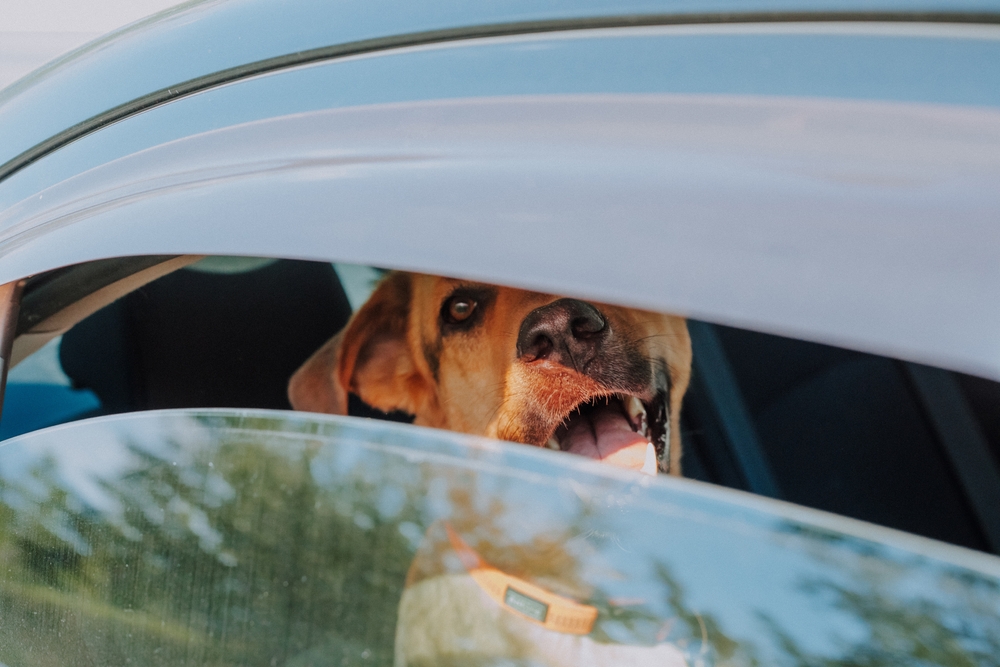As temperatures soar during the summer months, people aren’t the only ones who feel the heat—pets also are susceptible to the high temperatures. However, by paying attention to some heat safety measures, you can protect your furry friend from dehydration, sunburn, and heatstroke. The Pony Express Veterinary Hospital team offers guidelines to help you ensure your pet’s well-being throughout the summer months.
Heat risks to pets
Many pet owners make the mistake of thinking cats and dogs are better adapted to extreme weather than people. Unfortunately, this is untrue. Heat can have a severe effect on pets, including:
- Hyperthermia and heatstroke — Pets, including outdoor cats, are prone to heatstroke and hyperthermia. Unlike humans, pets cannot sweat efficiently enough to cool down. Instead, they rely on panting and minimally sweating through their paw pads. When this isn’t enough, their body temperature can rise to dangerous levels, leading to hyperthermia and heatstroke. Signs of heatstroke include excessive panting, lethargy, red tongue and gums, and disorientation. Heatstroke is a veterinary emergency and requires immediate care.
- Dehydration — Pets can quickly become dehydrated in hot weather. Dehydration occurs when the body loses excessive water and electrolytes. Signs of dehydration include dry gums and nose, excessive panting, lethargy, and loss of skin elasticity.
- Sunburn — Sunburn in pets can be a serious concern, especially for those with lighter fur or exposed skin. Dogs and cats with short hair, light-colored coats, or sensitive skin are particularly vulnerable, as are those with thin or sparse fur on their bellies and noses. If your pet does get sunburned, provide relief with cooling compresses and seek veterinary care if the burn is severe.
Preparing your pet for hot weather

Now that you know some of the heat-related risks to your furry pal, you may wonder how to prepare them for summer. Our team offers some summer safety guidelines:
- Provide fresh water — Ensure your pet always has access to cool water. Refill their water bowls frequently, and add ice cubes to keep the water cold longer. When on walks or traveling, always bring extra water and a bowl for your pet.
- Avoid midday activities — The hottest part of the day is typically between 10 a.m. and 4 p.m. During this time, avoid walking your pet or engaging in vigorous play. Opt for early morning or late evening walks when the temperatures are likely to be more comfortable.
- Never leave your pet in a car — Even with cracked windows, the temperature inside a parked car can skyrocket within minutes, leading to fatal heatstroke. Never leave your pets unattended in a vehicle, no matter how short the duration.
- Provide shade — If your pet is outside, ensure they have access to shaded areas. Avoid leaving them in direct sunlight for extended periods.
- Protect their paws — Asphalt, concrete, sand, and packed earth can become scorching under the summer sun. Check the ground with your palm before allowing your pet to walk on it. If it feels too hot to the touch, it’s too hot for their paws. Instead, walk your pet on grass-covered paths or purchase dog booties for extra protection.
- Groom regularly — Bathing and brushing your pet can help promote air circulation and excellent skin and coat health. Consider a summer trim if your four-legged friend has thick fur to help them stay cool. However, avoid shaving them thoroughly, as their fur protects their skin from sunburn.
Heat safety and awareness are vital for keeping your pet safe during hot weather. You can ensure your furry friend stays safe and comfortable by following our safety guidelines and scheduling a summer checkup with The Pony Express Veterinary Hospital team.

